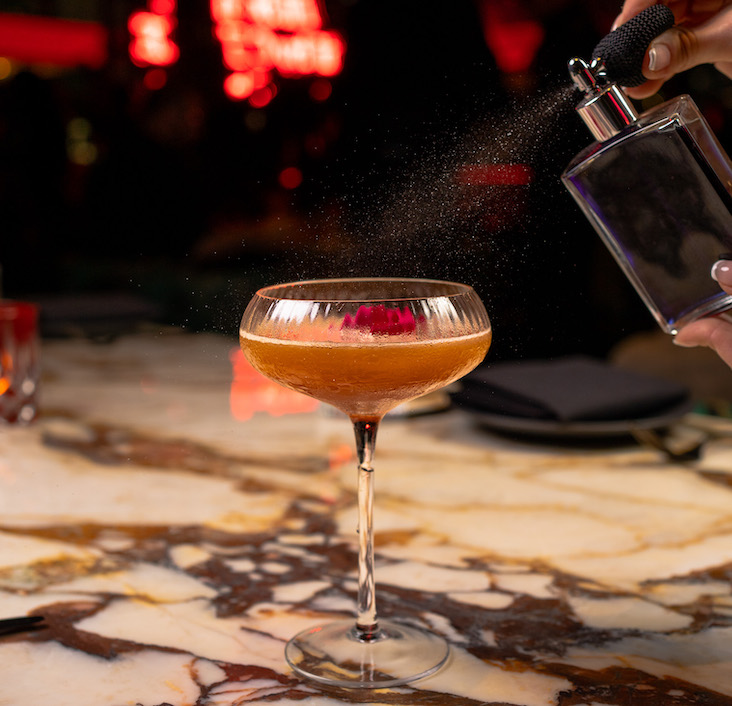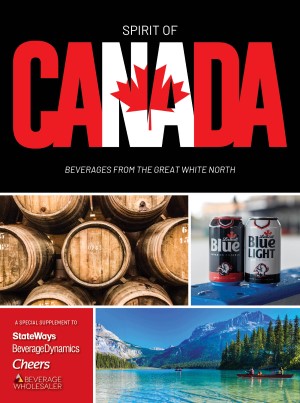Travelling in the Nord-Pas-de-Calais region of France during the mid-1990s, it was impossible not to take note of what seemed at the time to be a somewhat curious practice among the local bars, that of mixing beer with other ingredients. By the turn of the century, this habit had even spread as far as the growing segment of beer-focused establishments in the French capital.
It began, simply enough, with panaché and Picon bière, respectively the French interpretation of the shandy and a glass of beer, usually lager, fortified with Amer Picon, an herbal apéritif. Those basics, however, quickly expanded to a wide range of more complex potations, even, on one memorable occasion at a Parisian bar, a 750-ml bière flambée!
This mixture is the predecessor of the beer cocktail. And while the French approach may not have translated directly to U.S. shores—save perhaps for the Ameri-Beer at Boston’s Eastern Standard, $7, a mix of Czechvar lager and Amer Picon—it’s safe to note that a minor groundswell in beer cocktail creativity is starting to take hold.
As with most things American, mixologists are finding their inspiration in not one, but in a multitude of places. Some—indeed most—seem to be receiving guidance from the British habit of blending two or three beers together, a process that may actually have given birth to the beer style known as porter, which some suggest originally was a blend of three separate beers. Others are developing drinks out of the lager, salt and lime combination Mexicans refer to as a chelada, about which the famed beer writer Michael Jackson wrote about as far back as the mid-1970s. And still others are finding their muse in colonial Americana—or just adopting the creative spirit that has fuelled our current cocktail renaissance and applying it to beer.
A Classic Evolves
Almost all of these approaches were on display recently at an Oregon Bartender’s Guild charity event called NovemBEER Cocktails. Held at the Portland Pacific Northwest-influenced restaurant, Cassidy’s, it featured a Wassail (spiced and fortified ale), a beer used in a shaken cocktail, and even an IPA orange bitters and espresso stout vermouth, according to co-organizer Jacob Grier, chief mixologist for the Carlyle Restaurant, also in Portland.
“People were really curious about these drinks,” says Grier, who until recently featured on the Carlyle menu a dessert beer cocktail called the Defusion, $9, which blends Jameson Whiskey with Baileys Irish Cream and tops it with a Guinness foam and grated nutmeg. “It wasn’t just beverage industry insiders who were interested, either,” Grier adds; “Most of the crowd was the general public.”
The general public also has responded well to the lone beer cocktail available at Terroir, says Paul Grieco, co-proprietor of the small wine bar in New York City. The Abbey Flip, $9, mixologist Marshall Altier’s homage to the colonial-era Beer Flip, has graced the Terroir menu since the doors first opened in March, 2008. It continues to surprise patrons, says Grieco, “mostly because they haven’t a clue as to what a Flip should be.”
A blend of Ommegang Abbey Ale, pomegranate molasses, coriander syrup, nutmeg and egg yolk, the Abbey Flip is shaken rather than heated in the colonial fashion. “We don’t sell a lot of them, mainly because we’re a wine bar,” says Grieco. “But the people who order them generally love them.”
The closer to Mexico you get, either literally or in terms of menu concept, the more likely you are to come across chelada-based cocktails. So it comes as no surprise to find that the Mambo Michelada is big business at the eight location, Houston-based Mambo Seafood chain.
“At our concept, which is targeted at the blue collar Hispanic market, well over 50 percent of our beer is served as a chelada,” says company chief operating officer Robert McKinley. The Mambo Michelada, which is trademarked for restaurant service, mixes beer with fresh lime juice and the company’s proprietary spice mix. They also have applied for a retail sales trademark.
Mambo Seafood will prepare a Michelada with either domestic beer, $3.25, or imported, $3.50, chosen from a selection of six to eight imported brews, mostly from Mexico, and about a half-dozen domestics. “The type of beer chosen varies according to the customer’s tastes,” says McKinley, “But we don’t charge any extra [than the cost of a beer] for our Mambo Micheladas.”
Also operating out of Houston, one of the biggest proponents of beer cocktails is Hospitality USA, a chain of 20 English-style pubs with two concepts in three states. The result of a partnership the company originated with Guinness, the primarily blend-based beer cocktails list now accounts for an estimated $800,000 in annual sales, says director of beverage operations Matt Gambill.
The top sellers on their list are the Half and Half (stout and lager), Black and Tan (stout and ale) and Snakebite (stout and cider), all priced at $4.75 a pint, says Gamble. “But those are just three of a dozen combinations we offer, and the number one seller we don’t even list on the menu: the so-called Irish Car Bomb, $7.25, which we refer to internally as simply the ‘ICB.’”
Aside from the revenue, beer cocktails help craft an identity for Hospitality’s Baker Street and Sherlock’s concepts, according to the company’s vice president of operations, Steve Riley. “The beer cocktails put us in a category of being a little more adventurous,” says Riley.
And as much as anything else, that might be the real key to the beer cocktail advantage. They may not fly across the bar with the speed of, say, pints of lager or more traditional cocktails, but the simple act of offering beer cocktails as an option for customers places an establishment almost immediately on the cutting edge. And that’s very seldom a bad place to be.



